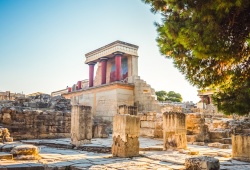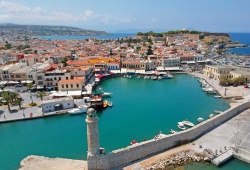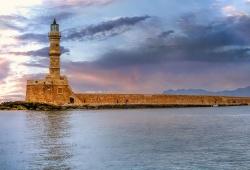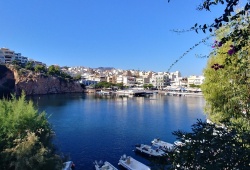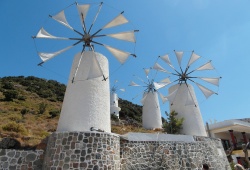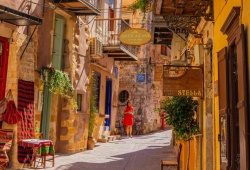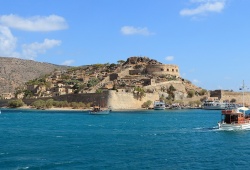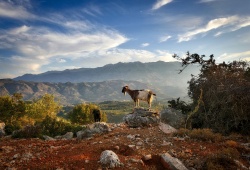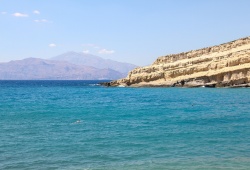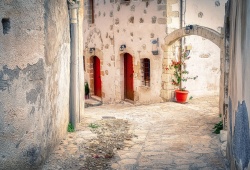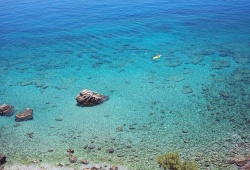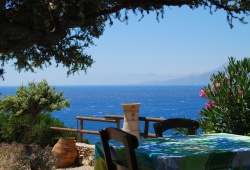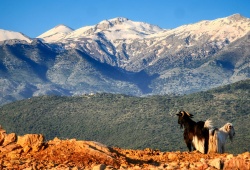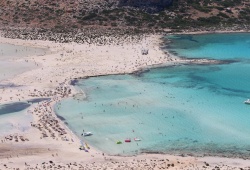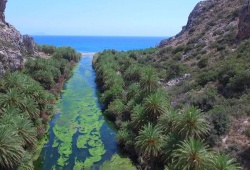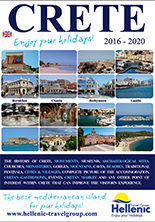Travel North, South, East or West of Crete: A Comprehensive Guide
Crete, the largest island in Greece, is a popular tourist destination known for its stunning beaches, rich history, and delicious cuisine. Whether you're a first-time visitor or a seasoned traveler, deciding whether to explore the north, south, east or west of the island can be a tough decision. Here, we'll provide a comprehensive guide to help you make an informed decision and plan your perfect Cretan vacation.
North Crete: The Tourist Hub
The northern part of Crete is the most popular among tourists, and for good reason. It's home to some of the island's most famous attractions, including the historic city of Heraklion, the picturesque town of Rethymnon, and the stunning beaches of Chania.
Heraklion is the largest city on the island and serves as a hub for transportation and commerce. It's home to the famous archaeological site of Knossos, which dates back to the Minoan civilization. The city also boasts a beautiful Venetian harbor, where you can take a stroll and enjoy the local cuisine.
Rethymno, located on the central coast of Crete, is a charming town with a rich history. Its old town is a maze of narrow streets and alleys lined with Venetian and Ottoman-era buildings. The town also has a beautiful beach and a lively nightlife scene.
Chania, located on the western coast of Crete, is often considered the most beautiful city on the island. Its old town is a mix of Venetian and Ottoman architecture, with narrow streets leading to the picturesque harbor. Chania is also home to some of the island's best beaches, including Balos and Elafonisi.
If you're looking for a lively atmosphere with plenty of tourist amenities, then North Crete is the place for you. The area is well-developed, with plenty of hotels, restaurants, and shops catering to tourists. However, keep in mind that it can get crowded during peak season, and prices tend to be higher than in other parts of the island.
South Crete: Off the Beaten Path
If you're looking for a more authentic Cretan experience, then the southern part of the island might be more your style. The area is less developed than the north, with fewer tourists and a slower pace of life.
One of the main attractions in South Crete is the Samaria Gorge, which is the longest gorge in Europe. The hike through the gorge takes around 5-7 hours and offers stunning views of the surrounding mountains and forests.
The town of Matala, located on the southern coast of Crete, is famous for its hippie past and stunning beach. The town is home to a series of caves that were once inhabited by hippies in the 1960s and 70s. Today, the caves are a popular tourist attraction, and the town has a laid-back vibe with plenty of cafes and restaurants.
The southern coast is renowned for its pristine beaches, secluded coves, and dramatic cliffs. One such gem is Preveli Beach, located near the village of the same name. Here, a palm tree-lined river flows into the sea, creating a breathtaking oasis of tranquility. Take a refreshing dip in the crystal-clear waters or simply relax on the golden sands, surrounded by the beauty of nature.
While South Crete may not have as many tourist amenities as the north, it offers a more authentic Cretan experience. The area is perfect for those who want to get off the beaten path and explore the island's natural beauty.
East Crete: Immersing in Authentic Cretan Life
Venturing east from Crete's main tourist hubs allows you to immerse yourself in authentic Cretan life. Start your journey in Agios Nikolaos, a picturesque town nestled around a serene lake. Explore the narrow streets, visit local markets, and enjoy a leisurely coffee by the waterfront. For a taste of traditional village life, head to the Lasithi Plateau, where time seems to stand still. Surrounded by mountains and dotted with windmills, this fertile plain offers a glimpse into the island's agricultural heritage.
No exploration of eastern Crete would be complete without a visit to the iconic island of Spinalonga. Once a leper colony, it now stands as a haunting reminder of the past. Take a boat trip to this rocky islet and explore the abandoned buildings, imagining the lives of those who were once isolated here. The stunning views of the surrounding sea and coastline add to the allure of this unique destination.
West Crete: Reveling in Natural Splendor
Traveling west from Crete reveals a land of unparalleled natural splendor. The region of Chania is a true gem, boasting a harmonious blend of rugged mountains, verdant valleys, and pristine beaches. Explore the White Mountains, where the sheer scale of the landscape will leave you awe-struck. West Crete is well-known for its verdant vistas and for its peninsulas, such as Gramvousa, Rodhoupou, and Akrotiri, which have a rugged coastline. As the snowy mountains are convered in winter, the verdant countryside, such as Askyfou and Omalos plateau, transform into vibrant flower fields in the spring.
Further west, the Balos Lagoon awaits, offering a paradise-like setting that seems straight out of a postcard. Accessible by boat or a challenging hike, this secluded beach boasts turquoise waters, pink-hued sand, and a sense of serenity that is hard to find elsewhere. Spend a day basking in the sun, swimming in the crystal-clear sea, and marveling at the untouched beauty of this natural wonder. Explore also the stunning beaches of Kendrodasos and Falasarna.
Which Part of Crete Should You Choose?
Deciding whether to travel north, south, east or west Crete ultimately depends on your travel style and preferences. If you're looking for a lively atmosphere with plenty of tourist amenities, then North Crete is the place for you. On the other hand, if you're looking for a more authentic Cretan experience and want to explore the island's natural beauty, then South Crete is the way to go. East and West Crete have their own distinct and unique heritage. It's also worth noting that Crete is a large island, and there's plenty to see and do in all parts. For a comprehensive experience, try to spend as much time as possible exploring every area of Crete.
Flights to Crete Crete Hotels Crete Tours Rent a Car
Conclusion
Traveling north, south, east, or west of Crete allows you to embark on a journey of discovery, unveiling the island's diverse landscapes and rich cultural heritage. From ancient ruins to pristine beaches, from traditional villages to bustling towns, each direction offers a unique experience that will leave an indelible mark on your memory. So, pack your bags, book your tickets, and get ready for an adventure you'll never forget.



